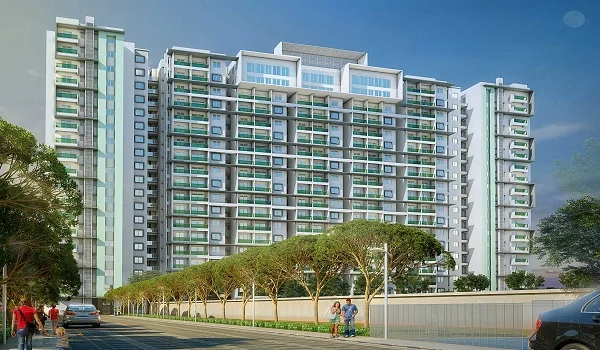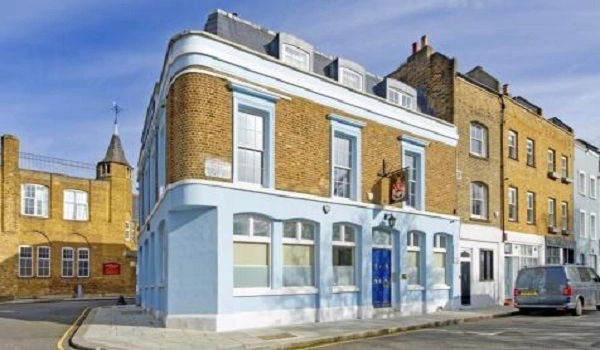Create The Perfect Home Office At Prestige Evergreen

A great home office does three things well: it helps you think clearly, it keeps your body comfortable for long stretches, and it stays connected without hiccups. At Prestige Evergreen in Varthur, you've got the right canvas—smart apartment layouts, strong digital infrastructure in the Whitefield belt, and quick access to multiple fiber providers. With a few thoughtful choices in furniture, lighting, acoustics, and internet setup, you can build a work zone that feels calm, sharp, and reliable day after day.
Pick the right spot (by apartment type)
- 1 BHK: Carve a nook near a window but out of the kitchen's path. A compact desk (100–120 cm) with wall shelves and a folding visitor chair keeps the space airy.
- 2 BHK: Convert the smaller bedroom into a study/guest room. Add a sofa-cum-bed and a floor-to-ceiling bookcase to double as a sound baffle.
- 3 BHK: Give one room to focused work. Place the desk perpendicular to the window (to avoid screen glare), then anchor a "Zoom wall" with art or a fabric panel for clean, echo-free calls.
Comfort is the base layer. Set your chair and keyboard so your elbows sit roughly at keyboard height, shoulders relaxed, and wrists straight. Keep a neutral posture—no hunching, no locked knees, and screen at/just below eye level. These basics reduce strain on tendons and joints and help you stay fresh through long calls.
- Chair with height/armrest adjustments and good lumbar support.
- Desk surface near elbow height when seated; add a keyboard tray if you need fine control of angles.
- Screen an arm's length away, with the top of the display at or slightly below eye level.
Natural light lifts your mood, but direct sunlight can wash out the screen. Sit side-on to the window, use blinds for mid-day glare, and add a height-adjustable task lamp for evening work. For eye comfort, follow the 20–20–20 rule: every 20 minutes, look at something 20 feet away for 20 seconds. It's a tiny habit that pays off in fewer headaches and less eye strain.
Whitefield–Varthur is spoiled for choice on broadband. Most residents choose from JioFiber/AirFiber, Airtel Xstream Fiber, and ACT Fibernet plans—so you can match speed to your workload and budget. If your calls are mission-critical, set fiber as the primary line and keep 5G fixed wireless (AirFiber) as a plug-and-play backup.
- Use a mesh system for corner bedrooms or long corridors; wire the nodes with Ethernet where possible for maximum stability.
- Keep the main router in the open, off the floor, and away from microwaves/metal cabinets; change congested Wi-Fi channels if you see interference.
- Follow modern router settings for best performance and security (WPA2/WPA3, proper band steering).
You don't need studio gear—just soften the room. A rug under the desk, curtains, upholstered seating, and a stuffed bookcase cut echo and background clang. Add a door sweep to block hallway sound, and keep a small white-noise fan for privacy during calls. Your voice will sound warmer, and transcripts will be cleaner.
- Mini-UPS for the router/ONT keeps internet alive through short power cuts (often the only thing you need for a video call to survive).
- A surge protector with spaced outlets handles laptop brick, monitor, charger, and lamp without a tangle.
- Route cables through adhesive channels; label both ends so swaps take seconds, not Saturday.
Pick a simple color palette (warm white + one accent). Place a plant within sightline for visual rest and a dash of green. On camera, avoid busy patterns; matte finishes read better under light. If the desk faces the room, hide peripherals in a shallow drawer and mount the power strip under the tabletop for a clean frame.
- Deep work block: 90 minutes with phone on Do Not Disturb; stand and stretch after.
- Meeting block: Calls back-to-back with a glass of water on the desk; camera at eye level, mic tested once a week.
- Reset block: Five minutes to tidy cables, wipe the screen, and set tomorrow's to-do. Tiny resets keep the office feeling new.
Blink often. Keep the screen clean. Use a desktop humidifier in air-conditioned rooms. If your eyes feel tired, it's usually dryness and muscle fatigue—behavior changes beat gimmicks.
- Compact Study (1 BHK): 120 cm desk + ergonomic chair, 24–27″ monitor on arm, slim drawer, pegboard above, mesh Wi-Fi node on the shelf.
- Hybrid Guest Room (2 BHK): 140–160 cm desk + sofa-cum-bed, blackout curtains, floor lamp behind the webcam, bookcase as backdrop.
- Full Studio (3 BHK): L-desk with under-cabinet power, two monitors, acoustic panel or fabric pinboard behind you, printer in a closed credenza.
- What internet speed should I pick?
300–500 Mbps is a sweet spot for two remote workers and 4K streaming; go 1 Gbps if you move large files or back up to the cloud nightly. - Mesh or single router?
Mesh wins in long apartments or when the study sits behind concrete walls. Place nodes in the open and avoid stacking them next to electronics. - Best posture cue?
Elbows at keyboard height, wrists straight, shoulders relaxed—neutral posture reduces strain and keeps you fresh longer.
Prestige Evergreen Blog
| Enquiry |








